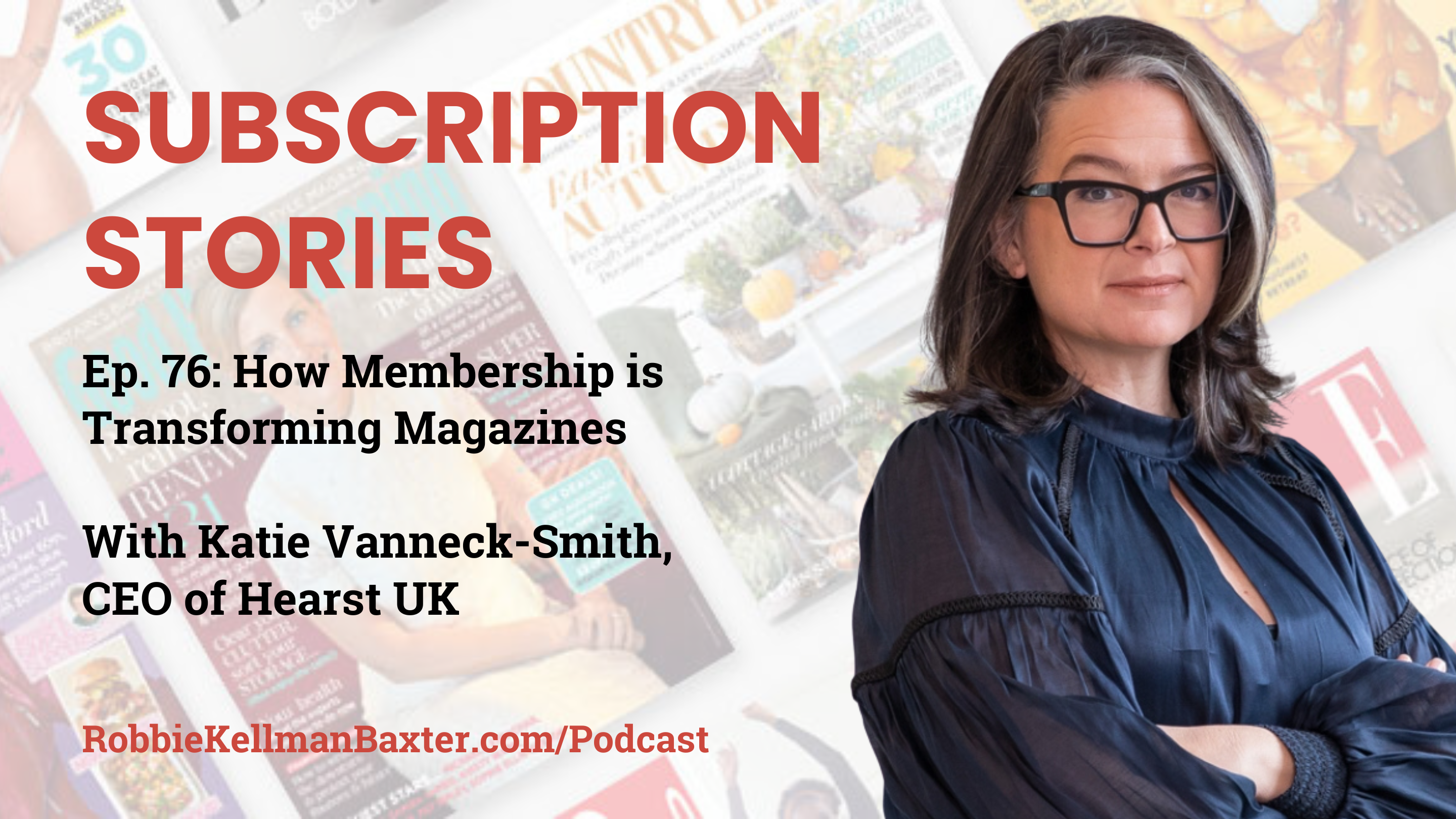
The subscription stories of publications like The Times, The Wall Street Journal, and Tortoise Media have one person in common, Katie Vanneck-Smith.
In her latest role, Katie is going beyond subscriptions. She’s leading Hearst UK’s efforts to create deep, valuable memberships around each of their 16 specialty magazines, titles ranging from Elle to Men’s Health to Good Housekeeping.
In this episode, you’ll learn how to build a platform that allows for rapid launches of multiple brand memberships, while still incorporating unique features and pricing bundles. You’ll also gain insights on how generative AI will and won’t affect the publishing world and why the forever promise of news differs from that of specialty content.
—
Listen to the podcast here
How Membership is Transforming Magazines with Katie Vanneck-Smith, CEO of Hearst UK
The subscription stories of publications like The Times, The Wall Street Journal, and Tortoise Media have one person in common, Katie Vanneck-Smith.
In her latest role, Katie is going beyond subscriptions. She’s leading Hearst UK‘s efforts to create deep, valuable memberships around each of their 16 specialty magazines, titles ranging from Elle to Men’s Health to Good Housekeeping.
In this episode, you’ll learn how to build a platform that allows for rapid launches of multiple brand memberships, while still incorporating unique features and pricing bundles. You’ll also gain insights on how generative AI will and won’t affect the publishing world and why the forever promise of news differs from that of specialty content.
—
Robbie Baxter: Katie, welcome to the show.
Katie Vanneck-Smith: Thank you, Robbie. It’s lovely to be here.
Robbie Baxter: It’s great to have you. I’ve been wanting to get you on the show for quite some time, so I’m very happy to dive right in.
You’ve led several media organizations as they’ve launched and/or scaled memberships and subscription pricing. Can you tell us a little bit about your professional journey in the membership economy?
Katie Vanneck-Smith: Of course.
Probably just for the listeners, it’s good to go back a step and just frame subscriptions and membership and my experience of it because I’m based here in London and in the UK and subscriptions weren’t the norm for newspapers. It’s quite a different market to many other markets.
And actually, I joined media in the mid-nineties, and the news industry in the mid-nineties was very much a retail-first business. We didn’t have subscriptions like lots of other news, sort of ecosystems in Europe and in the States. And so, interestingly, subscriptions were seen as quite a dirty word in the news industry because they were considered to be of lower value than the customer who was buying in the retail outlet.
We had 55,000 retail outlets that sold newspapers, and someone who bought on the newsstand would be paying full price, and then subscriptions only became a thing in the United Kingdom for newspapers in the mid-90s, and it was as the result of a price war, and it was a price war between The Times newspaper, which is where I worked, and the Daily Telegraph, and The Times newspaper was owned by Rupert Murdoch, and still is, and it was the number two newspaper to The Telegraph. The Telegraph was the number one newspaper, The Times was number two.
And Rupert decided to launch a price war on the newsstand and take The Times newspaper to 10 pence on a Monday versus a normal 35 pence. This then started a huge circulation war of the mid-90s and what happened, and I tell you this because I think it really framed my experience of subscriptions and membership and the differences I see them, is that the response of the Daily Telegraph, which was the number one selling newspaper in the United Kingdom, was to lock in all of their loyal customers on a one-pound for a seven-day subscription. And before that, subscriptions didn’t really exist in the UK for news brands. So what happened was that they sort of came out of a price war, and the Daily Telegraph locked in all their loyalists on this great deal for a subscription. The Times didn’t have any subscribers and fought at the newsstand.
It wasn’t until the mid-noughties that two things happened. One, obviously the internet. It disrupted distribution, but also we had a free newspaper launch in the UK called Metro, which was like for the commuters. When those two things happened, it was only at that point could see the difference between the circulation performance of the Daily Telegraph, which had locked in all of its loyalists on a subscription, versus The Times which actually then got really impacted by the digital disruption of free and the free alternative of a newspaper, and their circulation started falling quicker. And at that point, subscriptions was no longer a dirty word in the UK. It became a way to reward loyalty, to lock in our loyal readers, suddenly the mindset shifted from this is a low-cost discounting proposition to it’s going to take those people that buy you two to three days a week on the newsstand and get them locked into seven. And this sort of happened in the early noughties, and I had been working in the digital part of the business. So I launched the first websites and have been working in digital.
And in 2002, when I was running The Times online, which was The Times and The Sunday Times website. I said, I’d like to launch a paid for subscriptions for digital. And I got laughed out of the room because it was still considered that advertising was going to pay the way for all of these news brands in digital. It was also considered still that subscriptions were not like seen as the sort of brilliant forever promise of reccurring revenue and rewarding loyals. They were seen as still in the UK, a discount proposition, and I couldn’t get people to buy into the idea of a paid for digital in 2002, although I did do a little test in the Euros (UEFA European Championship).
Where if you remember the days where we used to pay for services on text message? So you’d get your football scores sent to you, and you’d pay £20 for somebody to update you with what the scores were in real-time. So we bundled all of that together in 2002 and created a package in 2002 for the Euros where you got the match report on a newsletter, you got the text messages, and we tested it, and we got 5,000 people paying £25 to buy this sort of packaged-up proposition to get access to the football as it was happening in real-time. But even that didn’t allow us to kind of change people’s mindsets. It was only when disruption of distribution, both with free internet and free alternative newspapers, really happened that actually, subscriptions became something that people were comfortable that we were going to kind of do in the UK, and so I was the chief marketing officer by this time, and as we lent heavily into subscriptions, both in print and also in digital, my journey into the membership economy was really around the fact that because of the history of subscriptions being seen as low value, because the retail market had been very much about what promotional value can you provide to people to kind of get them to buy your newspaper over to somebody else’s when they got to the newsstand.
We put those two things together, and before we even really thought about how we would do paid for digital subscriptions, we launched something called Culture Club. which was the idea that the culture section of The Sunday Times, which is the entertainment section, was where people’s passions were, the things they cared about, the things that they got excited about, watching on TV, going to the theater to watch the books they wanted to read.
Culture was your sort of window into entertainment. And we launched a proposition called Culture Plus. And Culture Plus became this idea that, as a subscriber, you would get access to book clubs, you’d get access to screenings of films. And as we then sort of got people more comfortable with the idea of paid for digital, because I was the architect of the paywall of The Times back in 2010, as we were going on that journey to getting people comfortable with that, behind the scenes, we launched something out of Culture Plus, which we launched in 2007 and then in 2008-2009, we made Times Plus. So we broadened it out. All of this value and all of the joy of getting closer to the journalists or to the people who wrote the stories became part of Times Plus. Events come to the printing presses, come and meet your favorite journalists. get the book, all of this stuff, we started to offer to the subscribers of the print edition, and it was that that ultimately allowed us to then get the company comfortable with the paywall on digital because we had this huge value proposition that brought to life the newspaper and your passions from the newspaper in something called Times Plus, which in effect was a sort of rewards and benefits program that kind of bought the paper to life in that way.
So it became, the membership proposition was Times Plus, the subscription was to The Times, and we sort of bought those two things together. And that really was where it all started to kind of get quite exciting for me because once we did that and we proved that people were happy to pay for digital subscriptions here in the UK, I got asked to go to the journal, which is where you and I met.
And then I had the opportunity to take the world’s most successful paid for digital news brand. One of the early adopters alongside the FT (Financial Times). And we got to kind of reimagine how you would take some of the lessons of what we’d done at The Times into some of the more traditional business subscription and open that out, and create CMO councils, CEO councils, and bring those business people together in a different type of membership proposition that was right for the journal. And then I did 22 years at News Corp. But after 22 years at News Corp, because I’m so passionate about journalism and healthy democracies, having great journalistic brands. When I came back to the UK and left News Corp, I founded a startup here in the UK called Tortoise. Tortoise is a slow news organization that now is predominantly podcast in its output.
Membership is really about belonging to something and subscription is a kind of transactional relationship. Share on XBut it’s the whole premise of Tortoise was the idea that it was going to be a newsroom built with and for our members and that it was going to be an opportunity to give our members a seat at the table and have their voices shape the journalism as well as sort of receive our journalism.
So for me, it was like a step even further on that kind of membership economy where you actually start to say, “What is the difference between subscription and membership for me?”
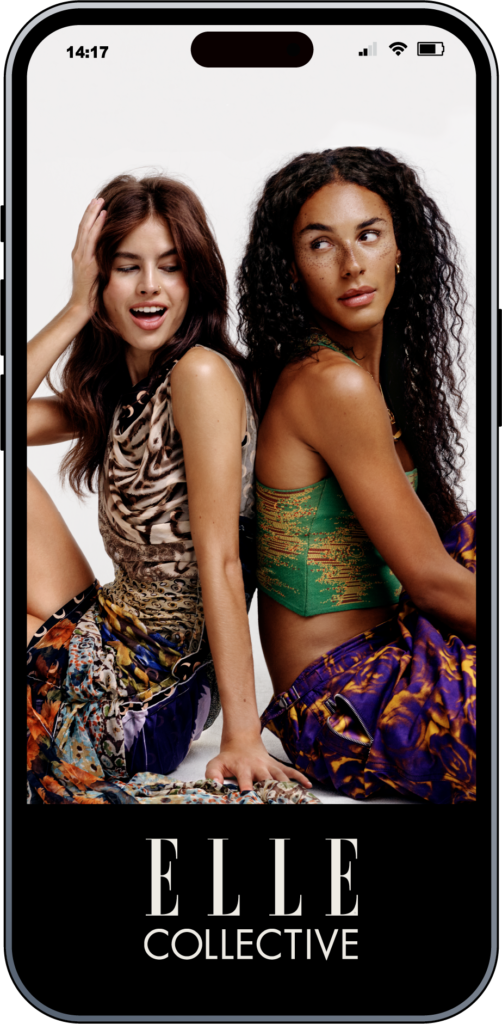
Elle Collective: Empowering young women through diversity and inclusion, fostering a community where they unite, amplify their voices, and embrace their power to lead with agency.
Membership is really about belonging to something and subscription is a kind of transactional relationship. So, roll on from five years at Tortoise building something that was built out of the concept of membership. I’m now fortunate enough to have a job at Hearst Magazines in the UK, and we’re bringing some of that membership thinking into a new company and a new magazine company where you go back to the full circle of Times Plus, all of those joys and passions we had to kind of create a membership program for to support the newspaper subscription are the foundations of great magazine brands.
So I’m now working in a sort of cornucopia of brands. I’ve got 16 brands that talk to people’s passions for things they love. So each of those is a gold mine and a kind of blank canvas of what membership could be, from Good Housekeeping to Men’s Health to Elle, and everything in between. I feel like I’ve sort of learned a huge amount, but I’ve still got a huge amount to learn because I’m now actually in a business that’s built out of passions rather than taking a subscription to a kind of news brand and kind of enabling passions to become an extension of that, and a program to support a subscription business over here.
I’m actually doing it the other way around, and that kind of is super exciting.
Robbie Baxter: You alluded to sort of the differences between bringing subscription to a news organization and developing memberships around a passion. So in the early days at News Corp, it was about sports and culture. Those were sort of your early places where you really began experimenting with membership, and it gave you kind of permission to be early to pay digital, which was quite unusual at the time.
We talked a lot about a forever promise, the reason that your subscribers or members continue to pay on a regular basis. There’s an expectation that there’s some kind of promise that the organization is making to them around learning, around belonging, around being secure, mitigating risk, whatever it is.
And I’m interested in your thoughts on the difference between a forever promise in a news organization and one with a specialty publication, such as the ones that you’re working with now at Hearst.
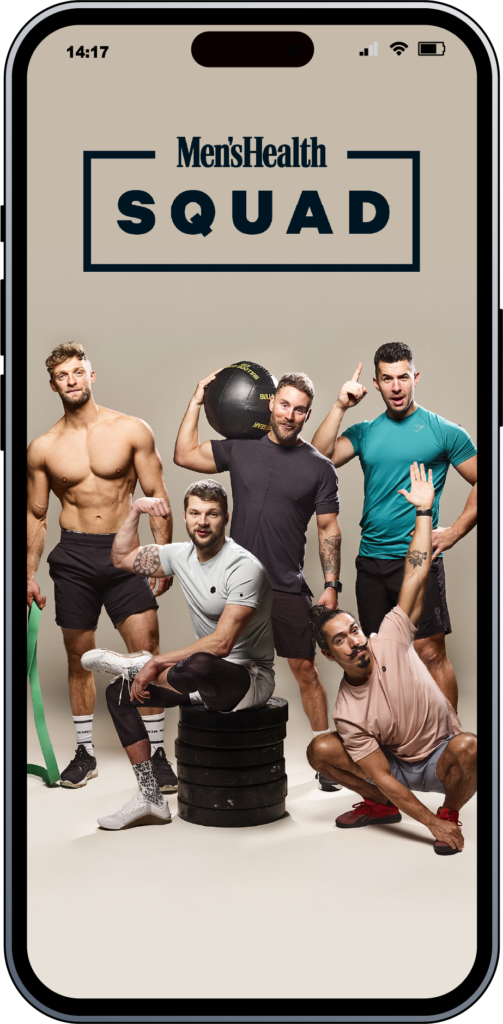
Men’s Health SQUAD: A brand-new health and fitness membership from the makers of Men’s Health that will help you get fitter, faster, leaner, stronger, healthier, and happier, part of Hearst UK’s membership portfolio.
Katie Vanneck-Smith: So it’s kind of interesting, isn’t it? The forever promise of news is tied to the core proposition that a healthy democratic society needs to have a very broad and healthy news ecosystem. And so actually there’s a sort of higher purpose in the forever promise of news organizations, which I don’t think is truly linked to why you subscribe.
Robbie Baxter: I was going to just ask you the follow-up question, which is, when I think about a forever promise, why do I pay to subscribe?
Well, maybe I pay to subscribe to my newspaper because I believe in the importance of journalism in protecting democracy and speaking truth to power, but also because I have my own selfish reasons for wanting to understand the world around me to seem smart, to make better decisions, to be able to talk to my friends who read the same publications, but I’m interested.
Katie Vanneck-Smith: It’s really interesting because I don’t think news organizations, with the exception perhaps of The Guardian, who have done more of an NPR model, which is the sort of donation model.
I think the Guardian and NPR are examples of forever promises in news organizations, like properly where they tie those two things together for the consumer.
The New York Times and The Times of London, the news organizations themselves don’t make it easy for the consumer to understand that forever promise, right? The reason that you subscribe, or if you look at the way they ask you to subscribe or commit, it’s always around price. They use it to kind of lock in loyalty to have that recurring payment. They don’t do the thing that you and I talk about, which is the importance of news to underpin healthy democratic societies. They never tell that story and it’s kind of interesting to me. And actually, sort of, there are exceptions. The Guardian is a great exception because of the way that they’ve created their donation.
The forever promise of news is tied to the core proposition that a healthy democratic society needs to have a very broad and healthy news ecosystem. Share on XThey’re very clear about why they ask you to donate. Wikipedia does this well. How they ask you to sort of support what they’re doing. And I think NPR has grown up on that sort of donation model. But I do think that the forever promise of news organizations lean more into the second part that you talked about, which was the promise to you as an individual. Whether that’s a Wall Street Journal, it was always read ambitiously when I was there. It kind of talked to you as an ambitious individual, or whether it’s, there’s a new current Wall Street Journal campaign, which is a very similar vein, but it talks to my favorite advert of all time was The Economist in the UK, and it had a billboard, a poster site that said, I never read The Economist and then underneath it, it said, Management trainee aged 42. And for me, that’s the promise that quality news organizations have made for you forever, which is that you’re going to be equipped and all of that sort of stuff. The subscription proposition often was about price, like locking you in to get a better deal, but the membership stuff that the brands have built out. That then starts to round you out.
Newspapers don’t just tell you the information in the news and equip you to be smarter. They also fuel all of your passions, and they fuel all of the things that you love and all of that full-rounded person. So many of the membership propositions and the promises that were made to people to become members of those news organizations I worked at were around unlocking the full you, like for all you are, and actually something for everybody. It’s not just brain food, it’s also soul food. It kind of gave you the brain power in the products every day, and then it gave you the joy and the soul food in your benefits.
I think to go to the question though, around how is it different for publications like magazines who are, which are much more niche or specialist, they talk in the DNA of the products that magazines are.
Fundamentally, we’re not functional as products, we are emotional as products. And so actually, in our DNA, there is an emotional connection that you have to try a little harder to make on news brands beyond your politics or your persuasion from a political perspective. They sort of talk to you.
And I know this myself, because I’m an avid Times reader, and I’ve been a loyal subscriber for many years. I describe myself as a Times reader, but in the UK, my favorite magazine in our portfolio is a magazine called Red. It doesn’t exist in the US, it’s a UK local magazine, but I describe myself as a Red woman.
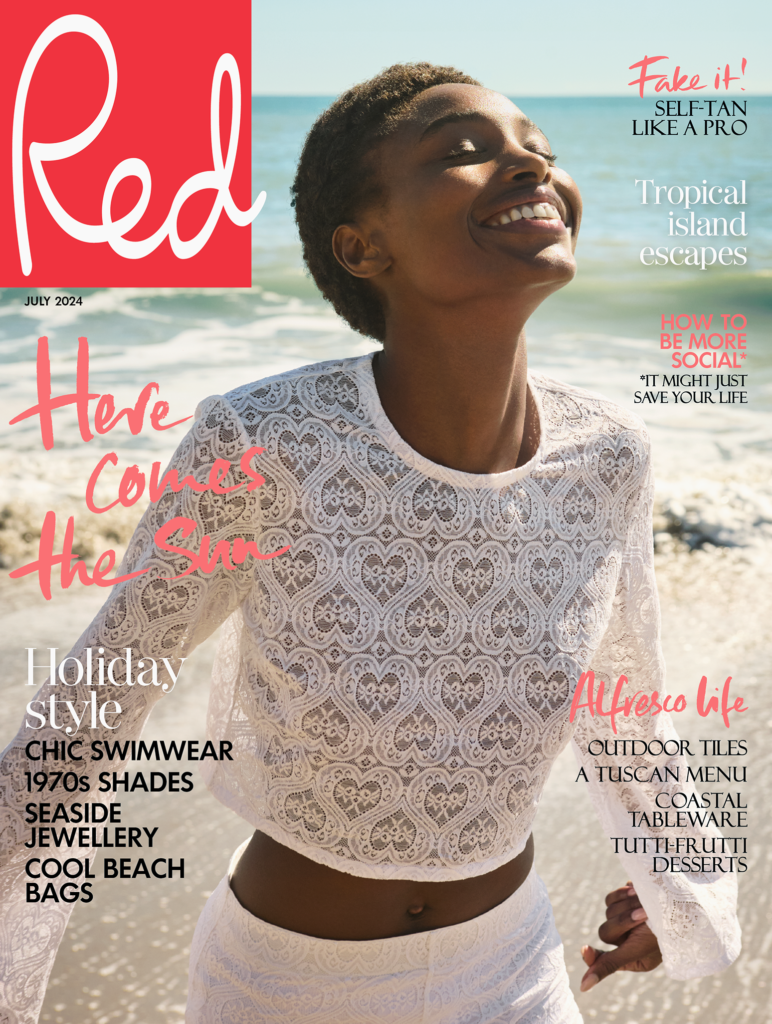
Katie Vanneck-Smith Reflects on 25 Years with Red: How This UK Magazine Became Her Best Friend and a Constant Companion Through Life’s Changes”
I remember when Red launched. It launched 25 years ago. It spoke to me. It was like my best friend in my ear, and Red has grown with me and the things that are in my life, and the women who are my friends, they’re also Red women, right? And so for me, membership sort of enables. This is where I see there being quite a big difference.I don’t think in magazines, I need to create membership. I think in news organizations, I needed to create membership propositions. I think in magazines, I need to connect. I need to enable what already exists in the DNA. And so, therefore, membership for me is more of an umbrella thought. It enables you to unlock something in your brand or in your business that enables you to make that emotional connection with your consumers that subscriptions don’t. Subscriptions are a transactional functional relationship, and membership is a personal emotional. It feels like it’s off the heart rather than off the head.
Robbie Baxter: Hearst has many magazine titles, 16 different titles with different niche audience subscriptions. So this transaction for loyalty already exists.
How are you implementing membership on top of that framework?
Katie Vanneck-Smith: I don’t think there’s any right or wrong way to do this. Actually, I think one of the best lessons of the last 20 years of experimenting is that it is not a one-size-fits-all.
When you come to 16 brands, it can be slightly overwhelming because you’re like, “Wow, I’ve got to come up with 16 different membership propositions.” And the way that we’re going about it for our magazines is to sort of take some of the lessons of kind of what’s worked in other sort of subscription and membership propositions I’ve built in content businesses and brands I’ve worked on before, and almost try and create a framework that can be the same so that the brands themselves can behave differently on top of it. So to kind of give you a sense of what that means is membership in magazines doesn’t have to equate to a paid for relationship. I think one of the things that I’ve grown up with in news organizations is that membership was the thing we put on top of subscriptions to make the subscription more attractive and to make that emotional connection.
One of the things that I've grown up with in news organizations is that membership was the thing we put on top of subscriptions to make the subscription more attractive. Share on XAnd actually with the magazine brands, let’s take Cosmopolitan, for example. Cosmopolitan, she’s a young girl. She’s sort of an 18 to 25 year old core audience, and she probably doesn’t have a lot of paid for subscriptions. She’s probably sitting on Mom and Dad’s Netflix. She may have one or two of her own, but the Cosmo girl can still be a member of the Cosmopolitan community, right?
And so the way I think about Cosmo is I think about that journey from being a follower to being a fan to being a friend. And maybe when you end up as a friend of Cosmo, there may be a kind of commercial and monetary sort of value exchange in there. But to be a follower or a fan, you’re still part of our community and part of the membership world, but there’s probably no sort of monetary subscription proposition behind that. There’s still a membership piece. But the way that I think about it is this sort of what works in subscriptions.
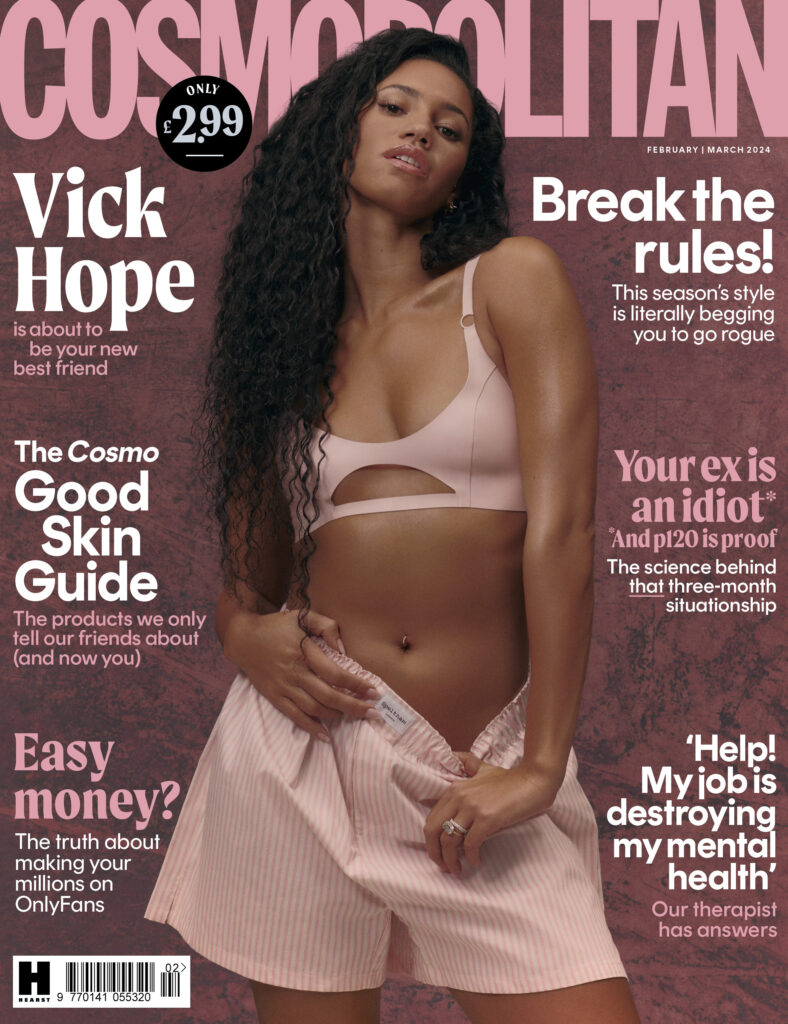
From follower to fan to friend: Cosmopolitan mirrors a deepening relationship, where initial community engagement evolves into valuable connections.
I think this is a good underpinning for thinking about membership. Some of the basic rules of subscriptions are to always have three products side by side. Have your small, medium, and large, and then use all of those great techniques, they call them behavioral economics. But all the stuff that works very well, which is you put the roundel on your most popular, you stamp it and say, This is our most popular, and you put them side by side.
And so you take all of that framework of what I call subscription management, and you put your membership side by side, and in our case, the small, medium, and large. Often, but not always, would be a digital-only membership, a bundle relationship with the physical magazine and the digital products.
And then on top, the sort of large t-shirt is the sort of real superfan, and it’s in the case of Good Housekeeping, it’s the Good Housekeeping VIP. The Good Housekeeping VIP is paying £150 a year for her membership versus a kind of classic member who might be paying £50 a year or a digital-only member who would be paying £20 a year.
And so you have a £20, a £50 and a £150. But the lady who’s a VIP Good Housekeeping member really loves the brand. She’s a tester at the Good Housekeeping Institute. She gets all of the face creams to test. She comes as a VIP to our Good Housekeeping live, a big annual event in London for Christmas, and she gets to meet all of the celebrities who’ve written books, and she gets signed copies of the books. She also has a book club every month where she gets the book for free. And then she can come physically to the Good Housekeeping offices here in London or join remotely on Zoom to join the book club with the author. She’s really committed to Good Housekeeping, and she tests all of our products, and she comes to all of our things.
But then you can have a classic member. That’s good housekeeping, but every brand, while that framework is the same, has three different side-by-side membership options, like the kind of low commitment, low cost, the higher commitment, higher cost sort of framework. They’ve all got one reward platform underpinning them. They all have access to sort of extras from the brand. They’ve all got access to the same. journalism and content, but then the different flavors exist underneath it.
We're not functional as products, we are emotional as products. In our DNA, there is an emotional connection that you have to try a little harder to make on news brands beyond your politics or your persuasion from a political perspective. Share on XAnd if you’re an Elle, it’s the Elle Collective. And so it’s much more about championing young women, diversity, and inclusion of those young women, bringing them together as a collective, and the power of those young women to have agency and voice.
If you’re a Prima, which is a magazine, which is a crafting magazine, it’s about intergenerationally bringing together the nonnas and the kids. With nonnas knitting together, you sort of take knitting and create that intergenerational thread. Every membership editorially is owned by the editor-in-chief, who from a brand and a content and a membership perspective, brings to life their brand in different ways.
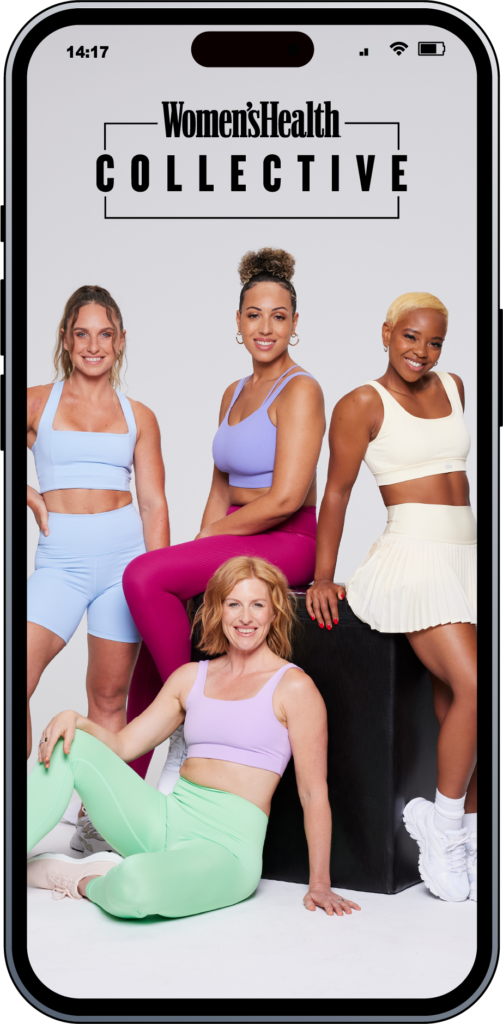
Women’s Health Collective is a women’s health and fitness membership from the makers of Women’s Health created to help members be the healthiest, happiest and strongest version of themselves, part of Hearst UK’s membership portfolio.
If you’re Women’s Health, obviously you’re working out all the time. I’m not a member of the Women’s Health Collective. I put my hand up and say, I love the fact that it exists, but it’s not my cup of tea. I’ll go knitting with the nonnas instead. We’re trying to take some of the kind of lift and shift frameworks of subscription, some of the best practices of three offers side by side, but trying to create frameworks once, but that allows every brand to kind of create their own versions of what it means to be a kind of sort of super fan, or if you like the kind of biggest commitment, biggest passion product the VIP or Collective or whatever the brands are doing. It isn’t the same for every brand, but hopefully, we’re taking the best practices, the technology stack, and all the stuff that you want to do once we’re trying to do once, and then you can flavor it for your different brands, from Men’s Health to Country Living. You’re not going to have the same experiences or the same promises made from Country Living, who campaign to give access for people with disabilities, the same access to the countryside and the UK. That is also part of what you get from your membership as well. You’re part of those campaigns, and you’re part of those voices. Tech stack frameworks, try and lift and shift. On top of that, build the right propositions for the right brands and audiences.
Robbie Baxter: It’s interesting because there is a tension between the piece that’s around consistency, scaling frameworks, and also this understanding that not only are the audiences different, younger, older, but also the promise is different.
I would also imagine that if it’s a crafting community or a beauty community. There’s an emphasis on commerce and products.
If I’m going to knit, I actually need wool, and I need needles and patterns. And so I’ve always thought about these types of memberships that there’s the content element, there’s the community element, the bringing together of people toward a cause or toward connection, and then there’s the commerce element.
I’m going to be a little indelicate here, but some groups have a greater willingness to pay. Their promise is something that they’re more willing to pay for.
I know you know that from your journal days, from The Wall Street Journal days, right? If you’re reading it to move ahead in your career, you’re going to think about the cost differently than if you’re thinking about it as something fun, your hobby, your knitting. On the other hand, people spend a lot of money on cars and all the parts and things relating to that. There might be more investment there.
The next question is, are there some promises or some groups where you’d say, “This lends itself really well to membership,” or others where you’d say, “I know that The Guardian talked about this idea that they thought that people wanted to be members and wanted to connect with each other and they didn’t.” They were like, “No, I want to support democracy, but I don’t actually want to talk to the other people just because they’re also supporting democracy.”

Country Living, an American lifestyle magazine from Hearst since 1978, is leading a campaign for equal access to the UK countryside for people with disabilities.
Katie Vanneck-Smith: We haven’t done membership on all the brands yet, and we have prioritized them by those brands where it’s very clear that that content community commerce play that you talk about is very strong and you can already see it in the DNA of those brands.
Good Housekeeping. Those women do want to talk to each other, and they do want to learn from each other. It is truly an intergenerational brand. It is a brand that your grandmother passed down to you. Your grandmother passed it to your mother, your mother’s passed it to you. It’s the brand that I thought, “Oh, wow, is it something that is not fit for the next generation?”
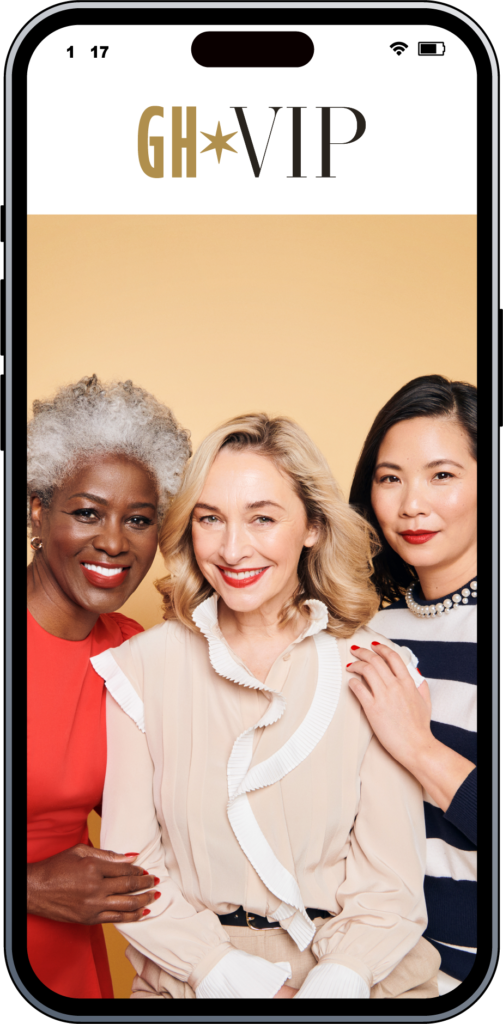
Good Housekeeping: A brand that spans generations, where women connect, learn, and share everything from recipes to home decor tips. As part of Hearst UK’s membership portfolio, Good Housekeeping VIP continues to engage and inspire for the next generation.
I’m a Gen Xer, and we’re the most sort of rejecting generation of all of the things that actually Good Housekeeping is built on. And actually, if you look at the cohorts, it truly is an intergenerational brand. It’s got the same penetration of women in their twenties as women in their seventies. We’re the ones who were sort of the rejecters because we were the kind of first moms to supposedly have it all. And as you realize, having it all just means doing it all. It doesn’t mean you have it, or you just have to do it all. If you look at crafting as a great example, the crafting in the under 35 is like huge, right? They do it for mindfulness. It’s their sort of digital detox.
To go back to the question, I think that is totally true, right? And that’s why I say it isn’t one size fits all. And that’s why we’ve built the infrastructure once to be able to reuse it. Where we can scale for efficiencies, we will. But what we build for Harper’s Bazaar will be completely different from what we build for Elle, even though traditionally they’re both magazines that appeal to the luxury advertiser and have had, for many years, a very similar commercial model.
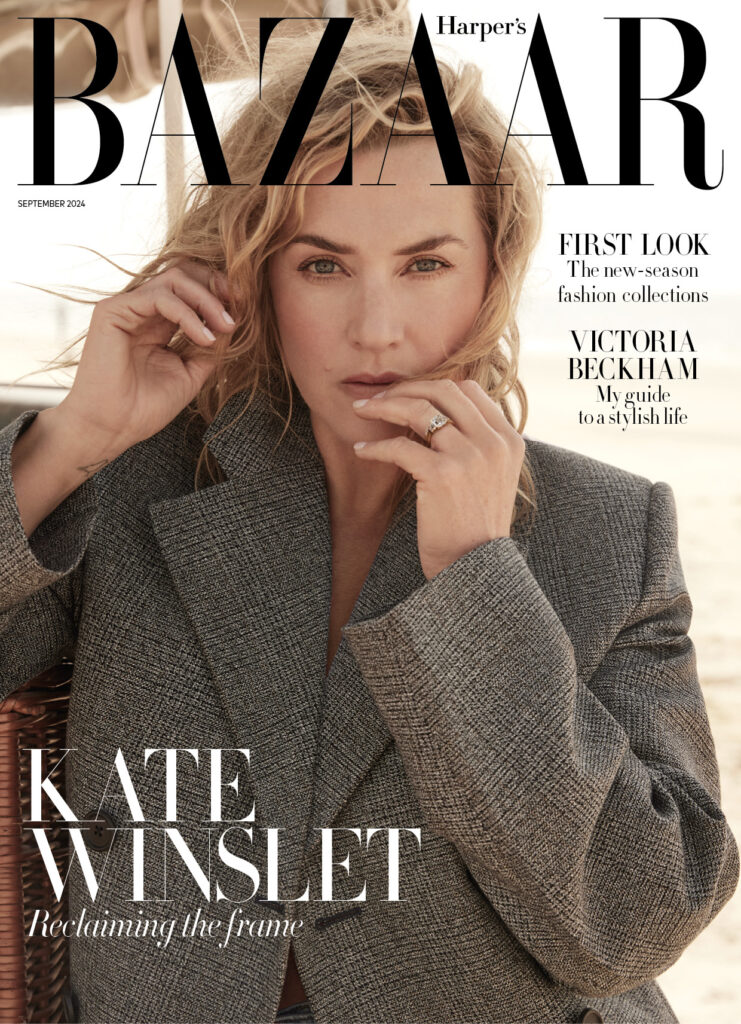
Harper’s Bazaar: Uses a unique strategy emphasizing its distinctive voice and vision compared to Elle’s established commercial model
If you think about Harper’s Bazaar and Elle, their commercial model has been the same. For the history of those brands. Actually, what you’ll see when we build out memberships on those brands is Elle Collective is really talking to that younger, very diverse group of voices, giving them agency, the collective nature of what they do, and how they come together. We launched it just up, coming up for a year ago and it’s increased the subscriber base by over 60%. It’s had over 20 events, which is the thing that when you talk about how do you make sure that it can be true to that brand? Events are a very big part of magazine-based membership. In these 20 events that we’ve hosted for our members, they’ve met Naomi Campbell. She was in conversation with Kenya Hunt, who’s the editor-in-chief of Elle UK. They’ve had a beauty masterclass with Chanel, and they’ve been to screenings with the cover stars. When you had Jodie Comer on the cover, they went to a screening of her film. So it really is that sort of the thing you love about Elle brought to life, but that’s going to be completely different for Women’s Health.
Women’s Health Collective is genuinely a game. When we launched that, I think we launched it at the back end of last year to take advantage of that whole January. Let’s all get to the gym again. When we launched the membership proposition, we saw our subscription sales double off the back of actually then building out membership in a way where it’s not just all of the expertise and all the content, it’s actually a personal trainer in your pocket. And when you go to the gym, your training program is there. You can do it alongside you. You can actually ask our personal trainers directly if you’re having questions. It’s a compliment, but that’s completely different. We actually don’t do it in real-life events at the moment with Women’s Health because it’s much more of a personal journey. That relationship you’ve got with Women’s Health is about me making me the best I can be. I don’t want to sit in a room and talk about that with other women. That’s kind of a personal thing. Whereas at Good Housekeeping, I want to talk about the book with the other women. I also want to go to the theater because when I’m standing in the queue with other Good Housekeeping women in a theater, they talk to each other, and it’s a much nicer experience going to a Good Housekeeping event than going to a normal theater event.

Subscription is not a one-size-fits-all
It isn’t one size fits all, and every brand will do it differently. I’ll be honest with you, I’m not sure what my House Beautiful membership proposition is. I don’t know because it’s not for super niche house builders It’s for people renovating their home, right? I haven’t gotten around to thinking about that one yet, but maybe if your listeners have some ideas, they can email you and then they can share them with me.
Robbie Baxter: I will provide at the end a way to reach out to you through LinkedIn or through Hearst so they can send you their ideas.
But I think what’s lovely are two things. One of them is that I want to just make sure that people caught that you’re layering membership onto the subscription is not just a way to deepen the relationship with existing members but a way to increase the number of members. It’s a bit of an acquisition channel as well as an expansion.
Katie Vanneck-Smith: 100%. Most importantly, I see membership as something if you’re already here and you already know how great we are, lucky you, you’re going to get more, but actually, I see it as the path for growth. The reason that we’re pursuing membership so passionately with the magazines is that I genuinely think this is the way to differentiate our brands and also to enable them to grow.
Robbie Baxter: I want to ask you before we wrap up, and I have a lot more questions, but I’m going to wrap up and I’m going to invite you back.
I wanted to talk about generative AI and what that means for an organization that is so based in content. How do you think specialty publishing magazines are going to evolve in this AI era?
Katie Vanneck-Smith: Generative AI, like everyone will say, there’s lots of opportunity, and there’s also lots of watchouts and things that we should learn from the first wave of disruption. That, particularly if you’re a publisher like myself, we made lots of mistakes when the internet came along and we all sort of jumped in very fast and completely disrupted ourselves, and then have spent the last 20 years trying to desperately figure out how we fix that. I feel that because we’ve been through that, you know, from a B2C media perspective, I think we are being more mindful around how we approach the opportunities and the areas that we need to kind of watch out for when it comes to generative AI.

Generative AI offers immense potential, but also important lessons from past digital disruptions. Katie Vanneck-Smith is now approaching it with greater caution and awareness, learning from previous challenges.
You can see that playing out in many ways that the big media companies are doing the deals to kind of protect that intellectual property directly with the Open AIs of this world, right? Understanding what our value is in this new ecosystem is a super important part of whatever we will choose to do. That is the lesson of the internet and the first wave of disruption.
There’s part of it that I think the disruptive nature of generative AI to B2C media, the consumer media companies will be less than potentially it will be to the B2B publishers. Because proprietary data sets are going to be much harder in a way. B2B publishing hasn’t really been as disrupted by the internet as B2C publishing was. And so, in a funny way, I think we’re going to be more resilient. We’re better placed to here’s how a lot of the mundane tasks that we will now have to do, here’s how automation is going to help, here’s how we can use our friend chatGPT as a 15th brain in the room, and another input into kind of our processes, and here’s how we’ve been totally disrupted and our business models broken by the major players in the internet.
Let’s make sure that we don’t make the same mistakes with the major players from a generative AI perspective. It’s a genuinely powerful tool ‘m excited about the way it will enable us to work better, to remove the mundane, and to focus on creativity and all those other great things.
I suppose I just come back to a real basic principle though, which is the future of content is membership. The future of content is ultimately human. And when you think about what membership is versus subscription, membership is human. A motive. Subscription is transactional. And I think there are many publishers that have lent too far into search engine optimization (SEO) or have tried to play at the algorithms, and they’ve become vanilla publishing as a result. They are not going to do well against the backdrop of generative AI because they haven’t stayed true to the brand. They haven’t remained differentiated. They’ve not invested in what makes us uniquely different, which is the human versus the machine If you think about your world and your framing of subscription versus membership, think about generative AI and journalistic content creation, which is the machine versus the human.
I’m kind of passionate about the fact that we’ll use it. It will be brilliant at many things. It’ll do things faster. It’ll be a better sort of research tool. It will disrupt B2B, much more than it’s going to disrupt B2C because ultimately, if you’re in magazines like me, my passions are ultimately of my heart over my head. They’re very human.
We’ve talked about what do you do to make a difference between a subscription and a membership? You bring people together, you bring them together, not just in digital communities, but physical communities. I think that humanity, that creativity, that is what ultimately humans seek out the authentic over the artificial. That is something that we do innately. And so I’m a radical optimist. I still think humans have a very important role to play on this planet. And so I’ll use it to unpick some of my legacy, fix all of the mundane, and make working more fun. And then I will make sure that the journalists, the members, the content creators, the connections of that content community, and the humanity of that are the things that ultimately underpin our memberships. Therefore, I’m not that worried about it.
Robbie Baxter: Do you have time for a quick speed round?
Katie Vanneck-Smith: Come on then. Give me your speedies, and I’ll give you speedy answers.
Robbie Baxter: First subscription ever?
Katie Vanneck-Smith: My first subscription was to Ocado, which is an online shopping supermarket. So that I could get free delivery, and that was in the year 2000.
I’ve been with them since 2000, 24 years.
Robbie Baxter: Wow. Loyalty.
Favorite subscription today other than your own?
Katie Vanneck-Smith: The Times.
Robbie Baxter: Biggest cultural difference of US versus UK organizations?
Katie Vanneck-Smith: The power of the spreadsheet is a lot greater in the US than the UK. The UK has a little less numbers first.
Robbie Baxter: One tip for a leader trying to instill more of a membership mindset in a subscription-oriented company.
Katie Vanneck-Smith: Meet the customers because you don’t have a membership without the community. I think we should all take a lesson from retail.
I love the fact that if you grew up in retail, you still have to do your tour of duty and you have to go and work in all of the different retail roles. I love that. And even if you’re the chief executive. Everyone still walks the shop floor. So many of our businesses are disconnected from that shop floor. You’ve got to create your shop floor.
I would say to every leader to know what your shop floor is and make sure you spend time on it with the people that ultimately pay your wages.
Robbie Baxter: Katie Vanneck-Smith, thank you so much for being on Subscription Stories. It was a real pleasure to have you.
—
That was Katie Vanneck-Smith, CEO of Hearst UK.
For more about Katie and Hearst UK, go to hearst.co.uk. And for more about Subscription Stories, as well as a transcript of my conversation with Katie, go to RobbieKellmanBaxter.com/podcast.
Also, I have a favor to ask. If you like what you heard, please take a minute to go over to Apple Podcasts or Apple iTunes and leave a review. Mention Katie and this episode if you especially enjoyed it. Reviews are how listeners find our podcast, and we appreciate each one.
Thanks for your support and thanks for listening to Subscription Stories.
—
Important Links
- Katie Vanneck-Smith, CEO of Hearst UK
- Hearst
- The Times
- Daily Telegraph
- The Telegraph
- Metro
- Culture Club
- Times Plus
- Financial Times
- News Corp
- Tortoise Media
- Article: The Guardian Launches New Three-tier Membership Scheme
- NPR Model
- The Economist
- Red
- Behavioral economics
- Kenya Hunt, Editor-in-Chief of Elle UK
- House Beautiful membership
- Ocado
About Katie Vanneck-Smith
 As Chief Executive Officer, Katie Vanneck-Smith has overall management responsibility for Hearst UK.
As Chief Executive Officer, Katie Vanneck-Smith has overall management responsibility for Hearst UK.
Katie has a wealth of experience innovating in the media industry, having worked for both large-scale corporations and more recently launching a successful startup.
Katie joined Hearst UK in December 2022 from Tortoise Media, a global media outlet that she co-founded in 2018. Prior to that, she was President and Chief Customer Officer of Dow Jones, where she helped build and lead The Wall Street Journal’s successful online membership-based business.
Katie has also held senior roles at The Telegraph Media Group and The Times. As Chief Marketing Officer at The Times, Katie led the architecture of the newspaper’s early move to paid digital subscriptions and was responsible for creating the UK’s first news membership brand, Times+. Katie also oversaw the company’s events programmes, including both The Wall Street Journal CEO Council and The Times CEO Summit.
Love the show? Subscribe, rate, review, and share!
Join the Subscription Stories Community today:
- robbiekellmanbaxter.com
- Robbie Kellman Baxter on Instagram
- Subscription Stories: True Tales from the Trenches on Apple Podcasts


